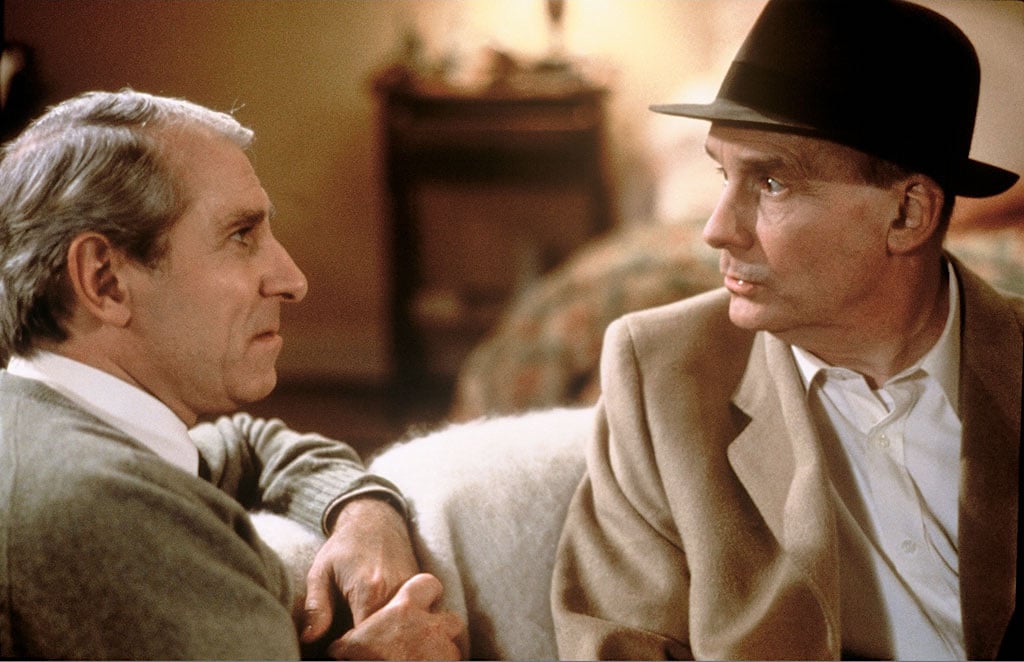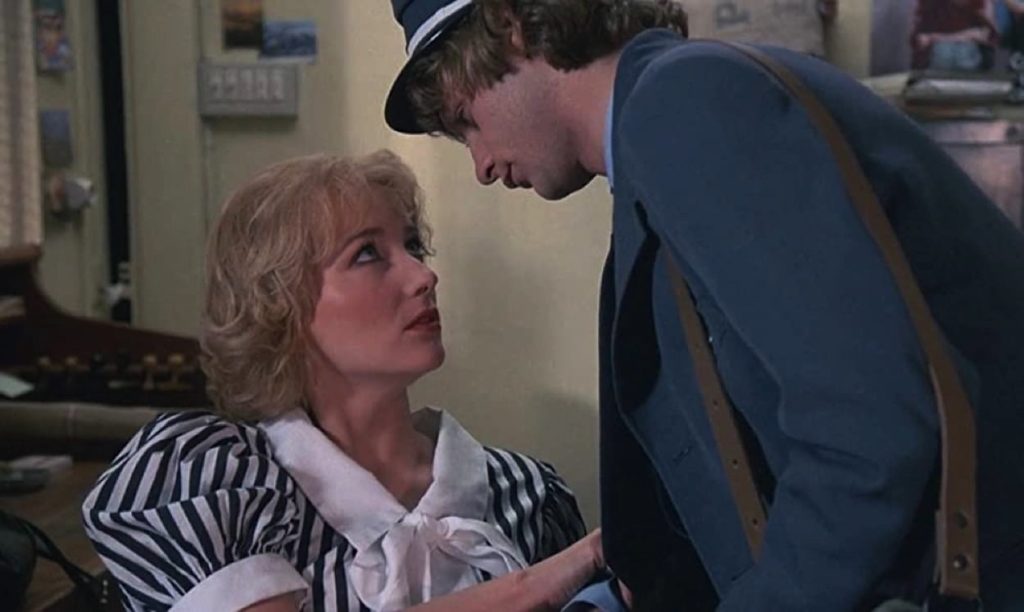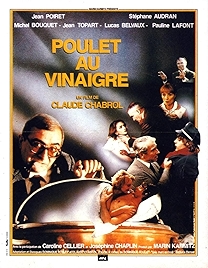Bienvenue à Cop au Vin, a rare example of a French film that didn’t use its original title (Poulet au Vinaigre) in English-speaking territories when it was released in 1985 but instead went for a different French title. Poulet is slang for cop. Cop in vinegar? Shrug.
Actually, it’s everyone else who’s in vinegar in this superficially straightforward policier set in a charming French provincial town where a trio of local notables are trying to corner the market for real estate and now just need one family to agree to sell up.
Director Claude Chabrol opens the film with a quick scene at a party, which introduces the action. It drifts by but don’t let it – there is vital stuff in here, right at the beginning, in classic whodunit/thriller style.
After that we meet the bullies – local butcher Gérard Filiol (Jean-Claude Bouillaud), big noise Hubert Lavoisier (Michel Bouquet) and local notable Dr Philippe Morasseau (Jean Topart). Against them are wheelchair-using, neurotic Mme Cuno (Stéphane Audran) and her much-harried son, Louis (Lucas Belvaux), the local mailman around whom everything spins.
It’s the Cuno house that the first three want, but Madame isn’t selling up no matter how much is offered. She’s attached to the house in a way that’s possibly not good for her mental health and has a similar relationship with Louis, who she accuses of trying to do indecent things with whichever local “slut” is in her field of vision, including the doctor’s wife, Delphine (Josephine Chaplin) and the big noise’s mistress, Anna (Caroline Cellier). What Mme Cuno doesn’t realise is that it’s Henriette (Pauline Lafont) at the local post office who she needs to keep an eye on. Henriette is blonde, buxom and clearly ready to drop her clothes for Louis whenever he asks.
As an unlikely sleuthing partnership develops between Louis and Henriette, Chabrol paints a semi-comic and largely affectionate portrait of life in a chokingly cosy French provincial town. It’s a portrait that isn’t particularly disfigured by the death, in semi-comic fashion, of butcher Filiol, and even remains charming when the doctor’s wife becomes entirely incinerated in a nasty car accident. And at around the same time Anna also goes missing. All three cases seem completely separate, but this being a whodunit, conventions seem to dictate that they aren’t.
Louis is a useful figure – a mailman goes everywhere, knows everyone – and Belvaux plays him as the good-looking young man whose charm and naivety opens doors. It’s a good cast all round, though – too good for something this slight, you might think. Bouquet and Audran are Chabrol regulars (Audran was married to him at the time) but had no trouble getting work. Bouquet with Jean Anouilh in the theatre and Alain Resnais and François Truffaut on screen, Audran for Sam Fuller, Luis Buñuel and Bertrand Tavernier.
They’re useful and add weight to a production that’s so lightweight, such a standard policier, that it almost feels as if it’s been run off a photocopier. The lighting is TV-bright, as if Jessica Fletcher was about to make an appearance on screen any second.
The Murder, She Wrote comparisons end not long after Inspector Jean Lavardin (Jean Poiret) arrives on screen. Initially a quixotic, amused presence, Lavardin starts out as the standard screen cop in something like the Columbo mould – asking apparently harmless questions that appear to be going nowhere – until suddenly Chabrol seems to flick a switch and Poiret comes into his own.
Cops are usually fallible beings whose imperfect understanding of a situation is what drives them on. Not so with Lavardin, who seems to know exactly what’s going on in this small town from the moment he arrives. His “investigation” is not so much being carried out to find the guilty party, or parties, but to assemble evidence to prove what he already knows to be true.
“I can see things,” Lavardin tells Louis at one point. “Even at night.” An omniscient/omnipresent being, this is the cop as god (albeit in a nice pullover), and an Old Testament god when necessary. Wrathful too, as Louis finds out to his cost when Lavardin asks him a question and Louis responds with a lie. Later, Hubert Lavoisier also tries lying to Lavardin and Lavardin responds by trying to drown him in a washbasin.
Lavardin turned out to be a popular character – Chabrol brought him back for another film (1986’s Inspecteur Lavardin) and for a short TV series (1988’s Les dossiers secrets de l’inspecteur Lavardin). He is the making of what would otherwise be a very unremarkable film.
Cop au Vin – Watch it/buy it at Amazon
I am an Amazon affiliate
© Steve Morrissey 2022


